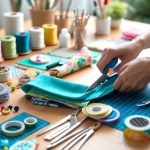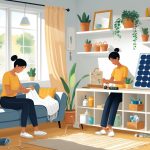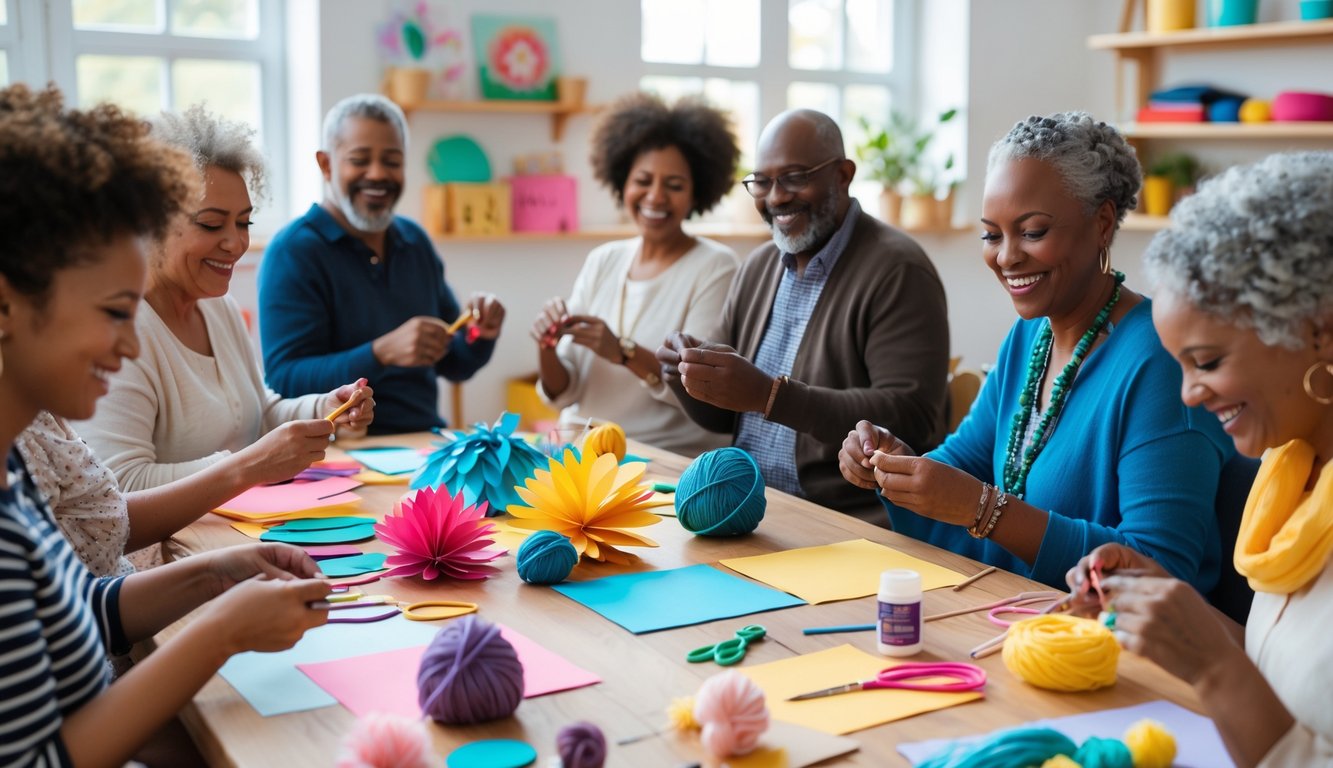
Incorporating Upcycling and Sustainable Materials
I’m not on some zero-waste crusade, I just hate throwing away stuff that still works. Upcycling is mostly about not buying more junk. My closet’s grateful.
Transforming Everyday Items
I opened a dented Altoid tin and, next thing I know, I’ve got a DIY cord organizer—mainly so my cat won’t chew the wires. That weird fabric bowl from old T-shirts? Only exists because my friend needed somewhere to dump her keys. Now it’s a permanent fixture at every gathering.
A recent survey said 63% of adults upcycle just to avoid clutter, not to “save the planet.” Makes sense. I painted a basket last year thinking it’d look awful, but now it’s in every Zoom call because pastel stripes are apparently trendy. Failed projects? Everyone’s got one. At least they’re not in the landfill.
Eco-Friendly Crafting Choices
Fun fact: those “recycled” boards at craft stores? Half the time they’re not even post-consumer. I fell for that once—bought a “green” bulletin board kit, realized it was just new cork with a recycled sticker. If you want to go eco, just use old cardboard or worn-out fabric. Expert articles keep repeating this, and honestly, the texture’s better anyway.
Ribbon scraps, bottle caps, leftover yarn that never matches—nobody peeks inside the bulletin board, but it’s 90% mystery filler and 10% sentimental fabric from a sweater I ruined. If you’re actually trying to be green, don’t stress about perfection. The best stuff always looks a little off. Even Martha Stewart recycles because it’s cheap and gives you a story, not because she’s aiming for eco sainthood.
Creating Aesthetic Home Decor on a Budget
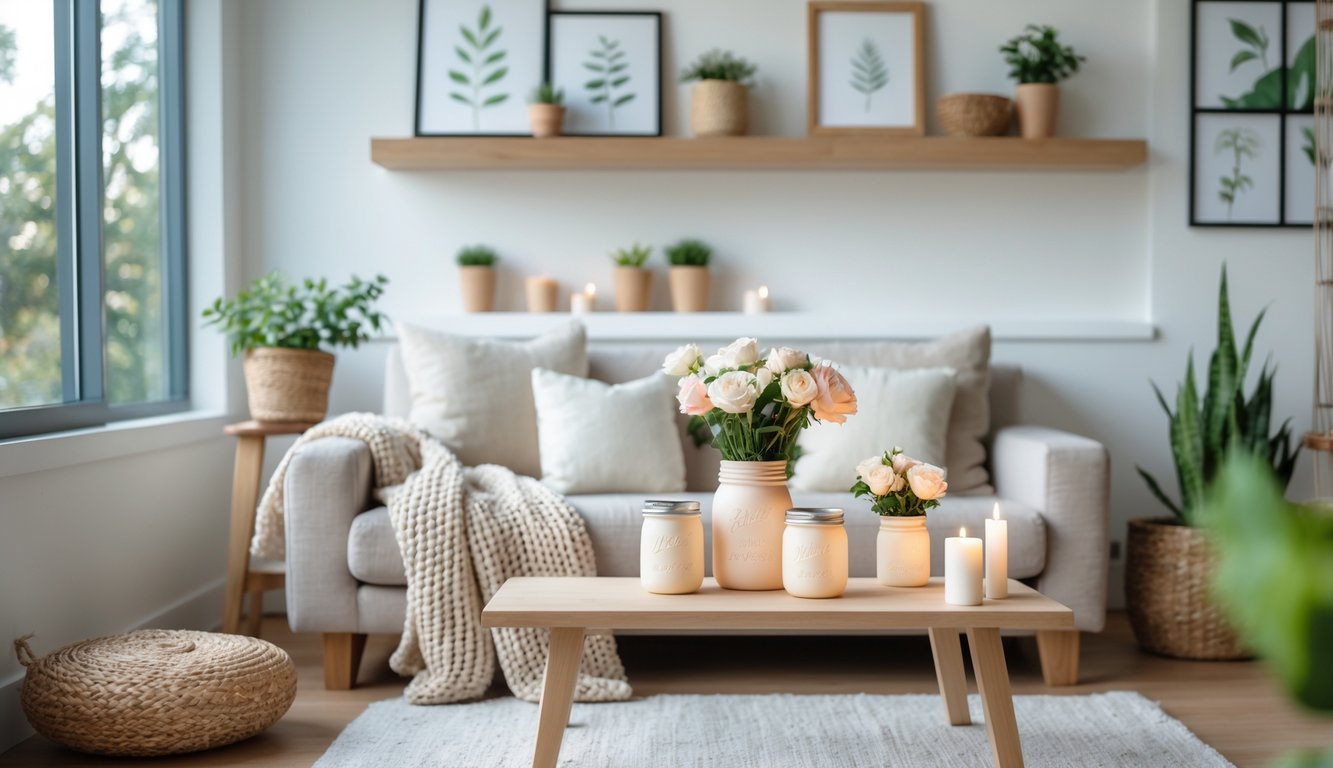
There’s glue on everything again, and one pom pom’s lost forever. Honestly, my obsession with cheap DIY decor comes down to this: if I screw up, who cares? It cost $2. The messier it is, the more it looks like I meant it. Like when I turned a chipped mug into a plant pot after a cactus tragedy. No regrets.
Decorative Flower Arrangements
Faux flowers? I’ve learned nothing about plants, but a lot about vacuuming. Crepe paper blooms never sit upright (unless you wire them—took me years). Trend now is big, lopsided bouquets. Saw a 2024 DIY guide say to use your own weird color combos (“yellow next to almost-purple” is apparently a vibe) and toss them in thrifted vases or random glass jars.
I just grab whatever—plastic, crepe, pom poms—jam them in a pot, and call it a day. “Asymmetry is chic,” say the experts. I’m suspicious but also relieved. Silk flowers? Way easier to dust than water, and nobody notices if you put them up high.
Budget-Friendly Wall Art
I used to think you needed “an eye for composition” until my friend made a gallery wall with magazine pages and thumbtacks, and somehow it worked. DIY wall art proves price means nothing. Blocking out big shapes with colored paper feels childish but fills space, especially above a thrifted dresser or next to a canvas print.
Try this: double-sided tape under a pom pom garland makes it pop. Leftover wallpaper as giant decals? Saves money, covers blank walls. My painter friend says, “If it’s the wrong size, hang it vertical.” That’s probably why my last set looked intentional, not like a mistake. If your art looks flat, swap the background—kraft paper behind busy designs fixes weird lighting, especially if your bulbs are wild colors.
Candleholders and Luminaries
No clue where my mismatched glasses go, but they always come back as candleholders. Glass jars are foolproof. Add gold wire or leftover birthday wrap and suddenly it’s “intentional design.” I read somewhere that water-filled jars with floating tealights look dramatic—tried it, made a mess, still liked it.
Battery-powered tealights are safer (learned the hard way). Pom pom garland around a candleholder—don’t let it touch the flame—adds texture, and people always notice. Cheap, dramatic, and you can always use the jar for pens if you get bored. Want more ideas? These tips are pretty clever.
The Therapeutic Benefits of Adult Crafting
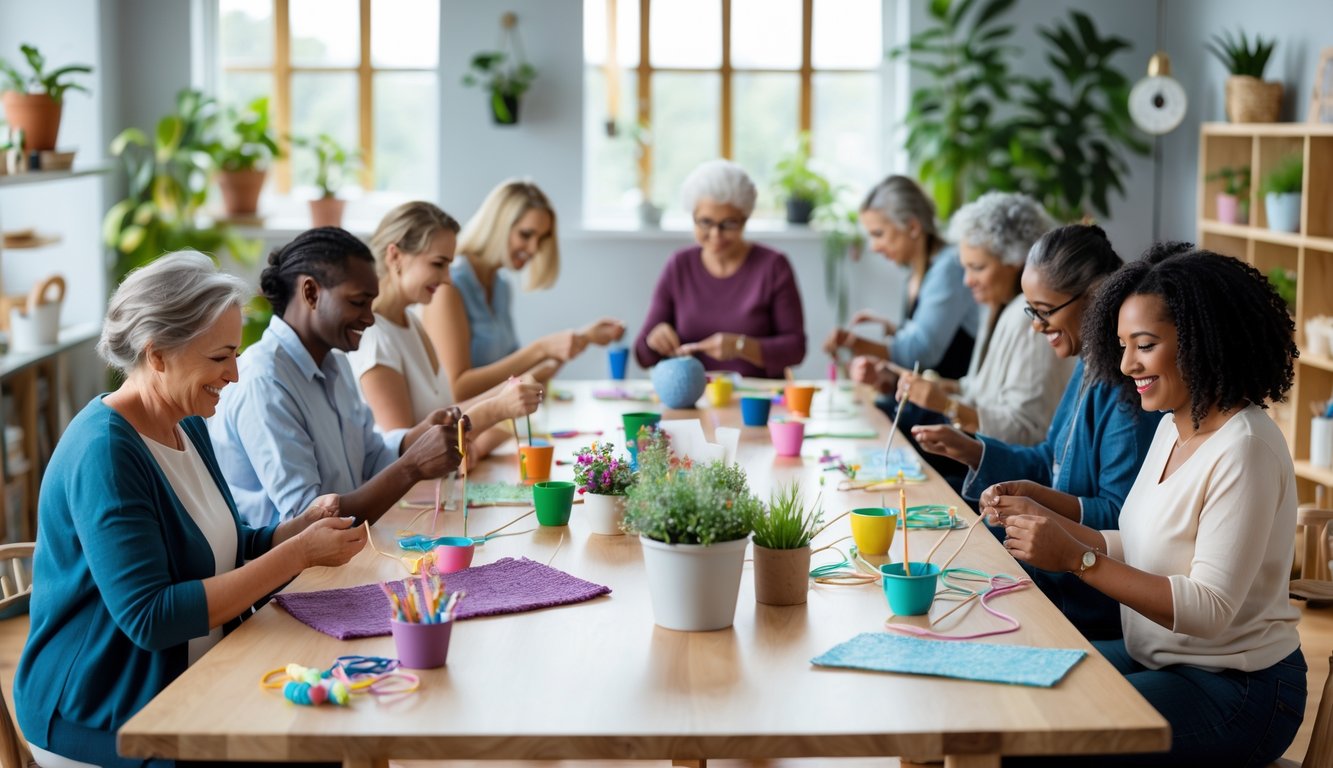
Trying to pick a project—pressed flowers that shrivel before I even finish, or another doomed fleece blanket—honestly, nothing clears my head like tearing the apartment apart for a missing glue bottle. Occupational therapists and art therapy studies say hands-on creativity helps with stress, focus, and mood. I’m not sure what the tiny pom-poms are supposed to do, but apparently people love them.
Reducing Anxiety and Improving Focus
So, I keep seeing these claims—like, “make lavender soap, and your cortisol just plummets!”—and yeah, I tried it. I’m supposed to be kneading soap base, relaxing, but honestly, I’m mostly reading about how art drops stress hormones in forty-five minutes. The Art Therapy Journal says so. Did I suddenly become calm? Not really. My brain did stop yelling about overdue bills for a while, though, which I guess counts?
I see lists everywhere—“crafting does this, crafting does that”—but the only thing that actually yanks my attention away from doomscrolling is moving my hands. Slicing up paper for some decoupage soap, sticking stuff down, fighting with glue—it’s messy and somehow meditative. Supposedly, this “flow” is what pro athletes get, but I’ve only felt it untangling yarn from my cat’s claws. Gardening? I kill basil, but at least I forget about everything else for a bit. Pressing flowers? I crush them half the time, but hey, my brain gets quiet. Is it possible to focus after 10 p.m.? Because I can’t. If you can, teach me.
Boosting Mood and Mental Health
You ever see those headlines? “Crafting is the new therapy!” Sure, maybe for people who finish pom-pom wreaths and don’t have to vacuum glitter out of their socks. But yeah, when I actually finish something—even a lumpy fleece blanket that could smother a hamster—I get this weird little jolt of pride. People keep saying crafting lowers stress, helps anxiety, whatever. Maybe. I guess if knitting forces my brain to stop spiraling, that’s a win.
There’s this almost ridiculous satisfaction in making presents out of random junk—like, here’s a decoupage soap for you, sorry it smells like glue. Or a pressed flower bookmark that’s half mulch. When projects flop, I just curse, start over, and somehow that feels like progress. Picking colors, feeling the fabric, swearing at my scissors—it’s all oddly comforting. Maybe that’s why therapists push crafts on their patients (my cousin’s OT won’t stop talking about it). It’s not about making “art.” It’s about sticking with something, even when the pom-poms keep vanishing under the couch.

